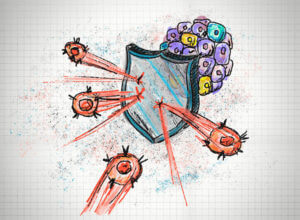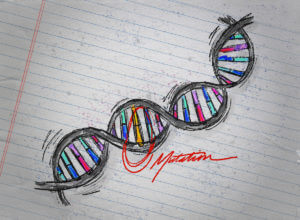There is no question that the biggest, most significant scientific story of 2020 is the work to understand, treat, and vaccinate against COVID-19. But the story doesn’t end there. Across bio, but particularly at the powerful interface of biology and technology, there have been a number of significant advances this year. Our podcast show “Journal Club” — which was launched in April on the a16z Podcast and is now part of Bio Eats World — curates groundbreaking new scientific articles, digs into the details and the key implications, and covers how to translate these new insights from paper to practice.
As the host of Journal Club, I’ve spent the last 9 months immersed in the scientific literature (well, 5 years and 9 months if you count my time as an editor of PLOS Biology!), selecting the articles to discuss and the guests to join each episode. For articles, we look for the big leaps forward, not just in our knowledge of biology, but in our applications of that information. Our guests include both the a16z bio team as well as leading academic experts. I want to say an extra special thank you to them — and to those of you who have been listening! (And for those who have not, be sure to subscribe in your favorite podcast app). Here’s a selection of episodes that represent some of the biggest bio breakthroughs of 2020.
New ways to treat disease

with Ronald Evans and Lauren Richardson
There are two key hurdles that must be crossed to treat — and possibly cure — Type 1 diabetes: one is the loss of the pancreatic beta cells that produce insulin and thus regulate metabolism; and the second is the autoimmune response that targets and destroys those beta cells. In this Nature article, the authors address both of these problems, in part by using the same tricks cancer cells use to evade the immune system. This work could represent a revolutionary treatment for a life-long condition.
Reversing Parkinson’s with New Neurons
with Xiang-Dong Fu and Lauren Richardson
Parkinson’s Disease is characterized by the loss of specific neurons in the brain. So what if we could just grow new neurons to replace those lost to disease? That is exactly what Xiang-Dong Fu and colleagues did in this groundbreaking Nature article. They reprogrammed astrocytes, another common cell type in the brain, to convert into neurons, which were able to functionally replace the lost ones in a mouse model of the disease. This work — which was inspired by an accidental observation in the lab — could lead to a substantial improvement for patients.
Degrading Drugs for Problematic Proteins
with Carolyn Bertozzi and Lauren Richardson
This article in Nature takes us one big step closer to making the term “undruggable” a thing of the past. The new therapeutic modality described in this work grabs onto disease-causing proteins and drags them into the lysosome, where they are degraded. This method for targeting problem proteins has a number of advantages over existing techniques and can hit proteins that were never accessible to drugs before.

with Anthony Atala and Lauren Richardson
Infertility is a common problem, and when caused by issues with the uterus there are few treatment options. This article in Nature Biotechnology makes a huge leap towards a solution by creating a bioengineered uterus that can be delivered surgically into a recipient (in this case, a rabbit) and function as the normal uterus does. This work is the first to show that a bioengineered uterus can support pregnancy and birth — and could address an unmet clinical need.
Slaying the Sleeper Cells of Aging with CAR T
with Jorge Conde, Andy Tran, and Lauren Richardson
One of the hallmarks of aging is the accumulation of senescent cells (also called zombie cells, though I don’t like that analogy because they were never dead). These cells can cause a number of issues — with the most troublesome being the inflammation that they induce, which underlies a number of age-related conditions. Removing these senescent cells is hypothesized (and supported by work in mice) to remedy these conditions and improve health. In this Nature article, the authors engineer T cells that can specifically target and destroy senescent cells, and show that these senescent-targeting T cells can treat several mouse models of disease. Could these cells be a major breakthrough in treating aging and improving healthspan?
Using CRISPR to Prevent Coronavirus and Influenza Infection
with Vijay Pande, Andy Tran, and Lauren Richardson
These days, when people think of CRISPR, they think of its application in genome editing (understandably, as this was the discovery recognized by the Nobel Prize this year). But CRISPR originally evolved not to edit genomes, but to destroy them. In this article, published in Cell, the authors use CRISPR for its original purpose: targeting and trashing viral genomes. Specifically, they program CRISPR to attack the genomes of SARS-CoV-2 and influenza A. This work could be the basis for a whole new way to treat these diseases: prophylactically.
New tools to explore biology (and one day treat disease)
 Turning a Toxin into a Genome Editing Tool
Turning a Toxin into a Genome Editing Tool
with Jorge Conde, Andy Tran, and Lauren Richardson
There are now multiple generations of systems that can edit the genome (zinc fingers, TALENS, and CRISPR, to name a few), but none of these has been able to touch one particular part of the human genome: the mitochondrial genome (mtDNA). Mutations in mtDNA cause ~150 different diseases in humans, so remedying these with genome editing is alluring, but until this Nature article, seemed impossible. The authors tamed a bacterial toxin and engineered it to target the mtDNA to perform precision edtis — creating a new way to study these diseases and one day possibly treating them with gene therapy.
Modeling Mysterious Brain Structures
with Madeline Lancaster and Lauren Richardson
Brain organoids are an exciting new tool for studying structures that were — at least until now — inaccessible. One of these structures is the choroid plexus, which plays a number of critical roles in the brain but which has been historically understudied due to its location and complexity. In this Science article, the authors created an organoid model of the choroid plexus which recapitulated its key functions, including secreting the cerebrospinal fluid. Importantly, this organoid model has a number of potential applications, including in assessing the safety of new drugs.
Finding New Antibiotics with Machine Learning, What Coronavirus Structures Tell Us
With Vijay Pande, Andy Tran, Judy Savitskaya, and Lauren Richardson
In the very first episode of journal club, we covered three articles. In the first, published in Cell, the authors used a deep learning approach to identify novel antibiotics. Not only were these antibiotics newly identified, but they had structures that were totally unique amongst known antibiotics, demonstrating the power of AI for generating unique insights. The second and third articles, published in Cell and Science, respectively, were two of the first works to describe the structure of the SARS-CoV-2 spike protein. Most of the vaccines in development for COVID-19 target this exact protein (including the Pfizer/BioNTech and Moderna vaccines) and understanding its structure was a key first step in understanding which regions to attack.
Building beyond biology

From Insect Eyes to Nanomaterials
with Judy Savitskaya and Lauren Richardson
There are seemingly countless uses for nanostructured materials, as they can provide a surface with a wide range of properties (reflective/anti-reflective, hydrophobicity/hydrophilicity, just to name a few). To date, creating such nanostructured materials requires advanced manufacturing methods. But in this Nature article, the authors devise a way to create nanomaterials with specific properties using just two ingredients that assemble themselves into reproducible patterns. This breakthrough was inspired by studying insect eyes (and the work of Alan Turing!), and could have major implications in biomanufacturing.
with Judy Savitskaya and Lauren Richardson
One of the foundations for life on earth is the ability to convert energy from the sun and carbon dioxide from the air into energy stored in carbohydrates. One of the key enzymes that mediates this conversion is called Rubisco, but it really hasn’t changed much since those early days. The problem is that Rubisco is very slow; so in this article (which builds off of this 2016 article, both published in Science), the authors re-engineered the entire carbon-fixing pathway to get around Rubsico, creating faster fixation. These re-engineered pathways could be the basis of synthetic chloroplasts that could extract more carbon dioxide from the air and fuel faster growing crops.
Surprising answers to long-standing questions
 How to Win an Evolutionary Arms Race
How to Win an Evolutionary Arms Race
with Harmit Malik and Lauren Richardson
Forget what you learned in Genetics 101, this eLife article flips commonly held ideas about how mutations impact protein function on their head; the senior author even observed that “My intuition before we did this experiment would have been to be the opposite in both respects.” These new insights — which came from studying a key protein involved in the immune response to HIV — could contribute to development of novel, and possibly curative, treatments to the virus that causes AIDS.
Architecting an Aggressive Cancer
with Elaine Fuchs and Lauren Richardson
One question that continues to stump scientists studying cancer is why some cancers are aggressive and why some are benign? This Nature article uncovers an unexpected resolution to this question in skin cancer: tissue architecture. It turns out that aggressive skin cancers build structures that create physical forces on the tumor and the surrounding cells that promote invasion from the initial site into new tissues. This work highlights the need to consider how cancers manipulate the mechanical forces of their environment as a critical part of their pathophysiology.
 Decoding Developmental Disorders
Decoding Developmental Disorders
with Vineeta Agarwala and Lauren Richardson
This article, published in Nature, demonstrates the power of genetic data-sharing programs. By combining sequencing data from a diagnostic lab, a research study, and a tertiary care center, the authors were able to uncover 28 new genes linked to severe developmental disorders. This work provides invaluable information to patients and their families, as well as inspires future research efforts and therapies.
-
Lauren Richardson is the Founder and Principal of LR Bio LLC.
-

a16z editorial
- Welcome to the AI + a16z podcast
- Navigating the Impact of Generative AI on Enterprise Security: Insights from Industry Experts
- America Needs More Techno-Optimism
- Regulating Crypto in the Name of National Competitiveness with Emilie Choi
- Securing America’s Future: How Technology Companies and Washington Are Building A Safer World

